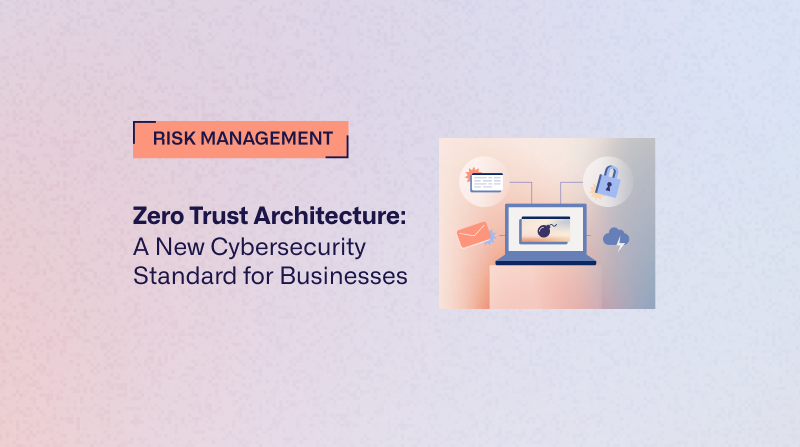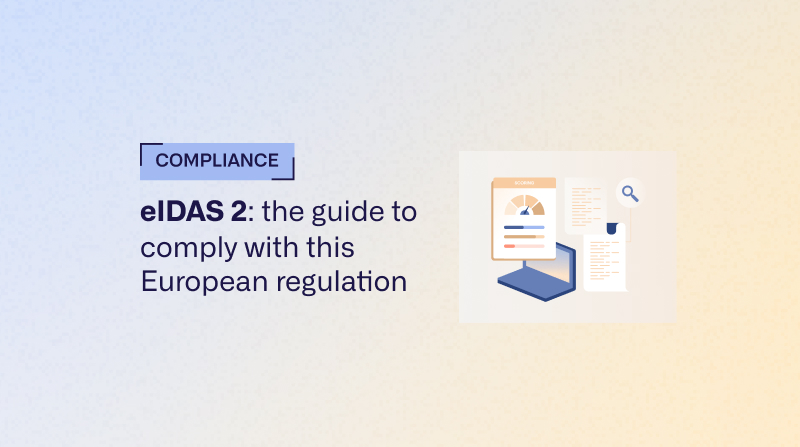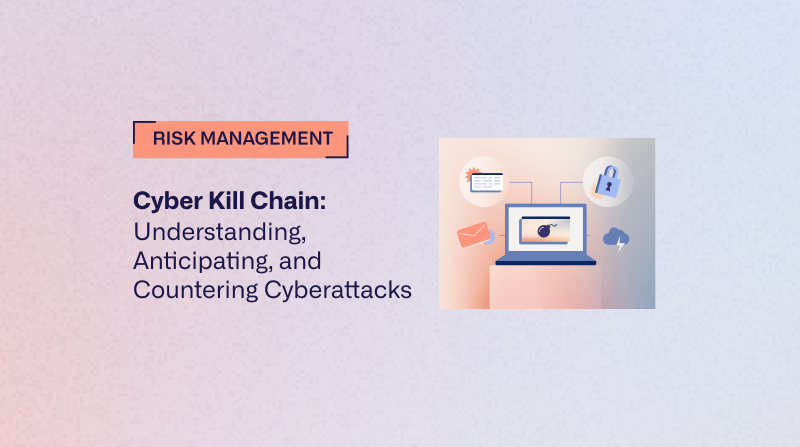Zero Trust Architecture: A New Cybersecurity Standard for Businesses
Traditional cybersecurity models, based on the principle that everything in an organization's network is reliable, are no longer enough. With the spread of the cloud, remote working and mobility, the digital boundaries of business have been shattered. Cyber threats, on the other hand, have multiplied and complicated.
It is in this context that the Zero Trust model Has established itself as a new safety standard. Her philosophy? “Never trust, always verify” (Never trust, always check).
In this article, we look back at:
- the need for Zero Trust architecture in the face of traditional models;
- its fundamental principles;
- its advantages for businesses;
- how it works;
- its implementation.
Introduction to the Zero Trust Model
The Zero Trust, also called Zero Trust architecture or ZTA (for “Zero Trust Access”), was born out of the failure of traditional perimeter security models in the face of digital transformation and changes in work environments.
Sometimes compared to castle systems, these traditional models assume that everything within the internal network is trustworthy and that a defense against the outside is sufficient.
However, these models were designed at a time when employees worked on site, applications were hosted in the data center, and terminals were controlled by the company.
Today, this environment Doesn't exist anymore. Users access resources from The cloud, their personal devices, and that, all over the world.
Moreover, in the traditional model, once authenticated, a user often has extensive access to the internal network. And that's exactly what attackers are looking for: get a single entry point and then move sideways until you have access to critical data.
Traditional security architectures have thus become ineffective in the face of current cyber threats and poorly adapted to IT environments businesses. That's where Zero Trust comes in.
Zero Trust architecture is a cybersecurity approach based on a simple principle: no user, device, or application should be considered trustworthy by default - whether inside or outside the network. This is even if he has already obtained permissions in the past.
What are the founding principles of Zero Trust?
The Zero Trust model offers a critical security framework for businesses in checking regularly all users and devices.
This approach is based on several fundamental principles that are redefining how businesses protect their data and systems.
- Systematic verification : each access attempt must be authenticated, authorized, and validated according to the context before being able to access a resource at each interaction. No trust is implied, even within the network.
- Principle of least privilege : ZTA provides users with the minimum level of access needed to complete their tasks. Limiting access rights to what is strictly necessary reduces the potential exposure in the event of an account being compromised.
- Ongoing monitoring : it guarantees constant visibility on activities, behaviors and anomalies in order to quickly detect any attempt at intrusion or malicious use of access.
- Proactivity : Zero Trust assumes that breaches are unavoidable. This lucid vision pushes companies to go beyond prevention and to actively anticipate cyberattacks.
What are the benefits of Zero Trust for businesses?
By adopting a Zero Trust architecture, businesses are promoting a cybersecurity strategy more resilient and compliant. The benefits of this approach are multiple.
Strengthening global security
By removing implicit trust and enforcing contextual access, Zero Trust significantly reduces the attack surface and prevents the lateral spread of an intruder in case of compromise. Every interaction is verified, limiting the risks associated with stolen credentials or unauthorized access.
Control identities and accesses
Zero Trust is based on systems IAM (Identity and access management) and WFP (Privileged access management), combined with strong authentication (MFA).
This ensures that each identity is known, verified and Controlled.
Encouraging regulatory compliance
The Zero Trust model makes it easy to comply with key regulations, like RGPD, the NIS2 directive, etc., by protecting sensitive data with comprehensive security controls and continuous monitoring. Additionally, logs, traceability, and granular access controls facilitate compliance audits.
Facilitating remote work and hybrid work
With the Zero Trust architecture, employees can work anywhere, anytime, from any device, and securely.
Ensuring the trust of customers and partners
In a context where the data protection has become a competitive criterion, Zero Trust helps companies maintain the confidentiality and integrity of the information they process.
This transparency and rigor reinforce the trust of customers and partners, while promoting the organization's brand image.
Allow better visibility and centralized management
Thanks to continuous monitoring, Zero Trust brings real-time vision behaviors and incidents.
Associated with a solution CRM, like Egerie, it makes it possible to correlate risks and to better manage the global security strategy of the company.
How does zero trust work? The key components
Instead of only protecting a company's perimeter, the Zero Trust model protects all files, emails, and data by regularly authenticating every user and device.
To do this, the Zero Trust network architecture combines various authentication techniques, of network monitoring, of encryption And of access control.
Authentication and authorization
In a zero trust environment, no access is granted without verification prerequisite. The ZTA generally relies on multi-factor authentication (MFA) and on access controls based on roles And the context, ensuring that every connection is legitimate.
Good to know : Multi-factor authentication (MFA) verifies a user's identity by asking them to provide multiple identifiers.
Network monitoring and analysis
Continuous monitoring makes it possible to quickly detect anomalies, suspicious activities or intrusion attempts. The objective for the company is to move from a reactive posture to a predictive cybersecurity and proactive.
End-to-end encryption
Sensitive company data is Encrypted and protected. Even if information is intercepted, it remains unreadable to any unauthorized entity.
Access control mechanisms
Access to resources is defined in such a way contextual. Authorization decisions take into account not only theuser identity, but also additional factors such as the localization, the terminal type, or even the observed behavior.
Micro-segmentation
This approach helps to contain the spread of threats. by dividing a network into small sections, accessible separately and each with its own security rules. It is a key part of the Zero Trust architecture, as it helps to isolate threats andavoid lateral movements.
Zero Trust Network Access (ZTNA)
The ZTNA Is a function of the model Zero Trust which is focused on the application access control. It extends the principles of Zero Trust to monitor users and devices before each application session, ensuring compliance with the organization's security policies.
How do you implement the Zero Trust model?
Deploying a Zero Trust architecture is a strategic evolution process. Here are the key steps to make this transformation a success.
1. Evaluate the protective surface
Start with a security audit in order to identify vulnerabilities and areas of implicit trust. This will allow you to define a protective surface, in other words, the data or network components that you absolutely need to protect. This can be customer data, personnel information, financial records, plans and patents, etc.
2. Define a clear road map
From this audit, establish a plan progressive, prioritizing the critical environments (sensitive systems, high-value data, privileged access...).
3. Manage access to devices and networks
Then deploy themulti-factor authentication, the micro-segmentation, and the contextual access rules according to risk levels.
4. Define data permissions
Consider assigning classification levels to your organization's data based on the Principle of least privilege. To do this, determine what resources each employee should be able to access and ensure that they only have access to these specific areas. Limiting the attack surface in this way helps to reduce human error.
5. Aligning the approach with GRC governance
Document controls, integrate Zero Trust into your processes Cyber Security GRC and insure the full traceability accesses and incidents. The Zero Trust is built gradually, with a strategic vision led by the cybersecurity department and corporate governance.
A platform like Egerie helps you manage your cybersecurity strategy in a connected and effective way. Orchestrate all of your cybersecurity programs from a single platform and spread security culture across your organization in a simple way.
Key Takeaways: The Technological and Organizational Pillars of Zero Trust
A zero trust environment is based on pillars at the same time technological and organizational.
Identity management
- Centralized identity management (IAM, PAM);
- Multi-factor authentication (MFA);
- Behavioral access analysis.
Dynamic access control
Each access request is evaluated according to the context :
- Conditional access policies;
- Micro-segmentation of the network;
- Application of the principle of least privilege.
Governance and compliance
Zero Trust processes should be aligned with the GRC strategy :
- Cyber risk mapping;
- Control documentation;
- Reporting for management and auditors.
Safety culture
The human factor remains central. A successful zero trust strategy is based on ongoing awareness collaborators in the cybersecurity culture.
Zero Trust can sometimes be perceived as a constraint by employees (especially the application of the principle of least privilege and multi-factor authentication). It is therefore necessary toinvolve all employees in this new cybersecurity governance by offering training and by clearly explaining the benefits of this architecture.
Integrating Zero Trust into a GRC strategy
Deploying a Zero Trust architecture means investing in operational resilience, the trust of customers and partners And the regulatory compliance.
But Zero Trust isn't just a technical tool, it's a governance model that needs to be integrated into a broader risk management and compliance approach.
With a platform like Egerie, you can easily:
- map access and identity risks;
- ensure real-time monitoring of these risks through dynamic dashboards;
- manage security according to business and regulatory priorities;
- ensure compliance with regulations such as NIS2 and facilitate audits;
- provide clear reports to facilitate strategic decision making...
By combining technology and governance, the ZTA allows businesses to build cybersecurity sustainable, measurable and compliant.
Request a demo free and find out how Egerie can help you deploy your Zero Trust architecture.
Zero Trust FAQ
What is zero trust in cybersecurity?
It is a security model based on the principle that no user or device should automatically be considered trustworthy. Each access must be authenticated and authorized in a contextual manner.
Why is zero trust needed today?
Because traditional perimeter-based architectures are no longer enough. With the cloud and remote work, network boundaries have disappeared. Zero Trust addresses these new challenges by ensuring that each access request is verified based on identity and context.
Is Zero Trust replacing existing security solutions?
No He the complements and reinforces them by introducing a logic of continuous verification and fine management of access.
How long does it take to deploy a zero trust strategy?
It all depends on the maturity of the company. A gradual approach over 12 to 24 months is often recommended to ensure adherence and sustainability.
How does zero trust strengthen regulatory compliance?
The model facilitates traceability, justification of access and control of user rights, thus meeting the requirements of standards and regulations such as RGPD, ISO 27001 or NIS2.
What are the main benefits for the company?
Zero Trust allows you to:
- Reduce the risks of intrusion and data leaks;
- Simplify security management and reduce costs;
- Strengthen the trust of customers and partners;
- Support GRC compliance and governance








